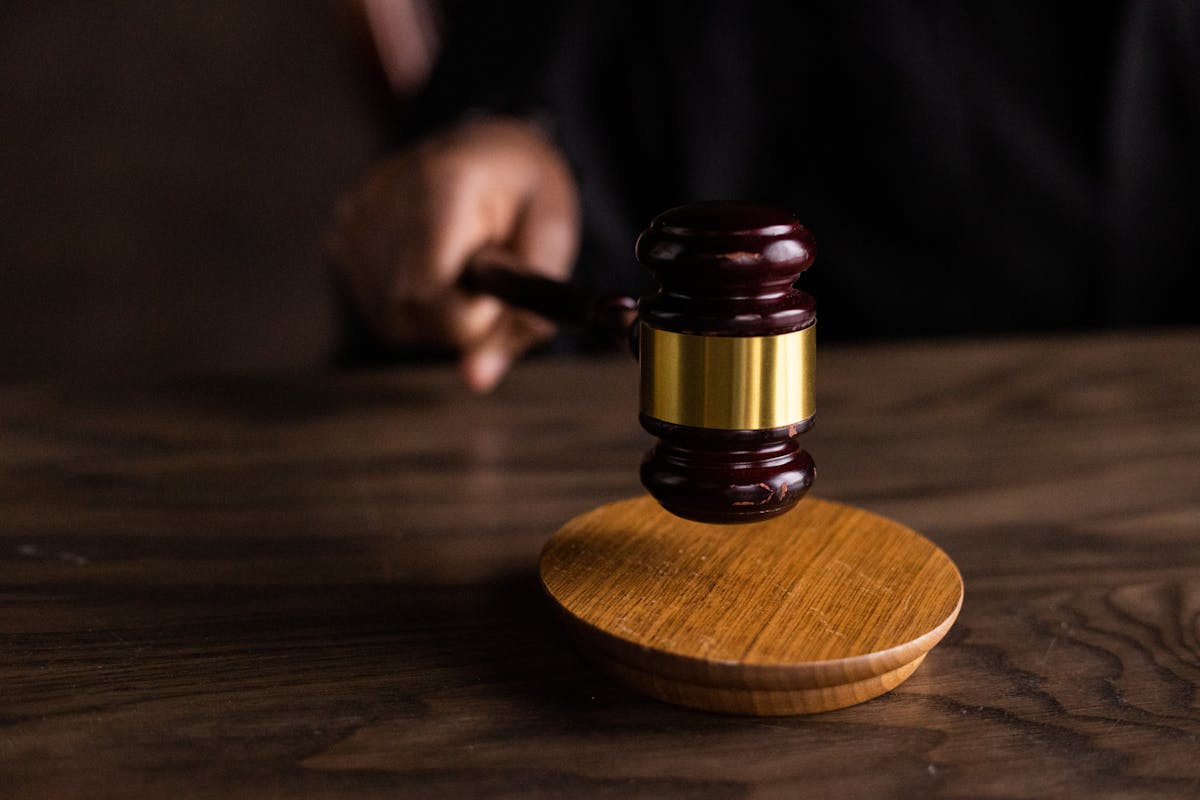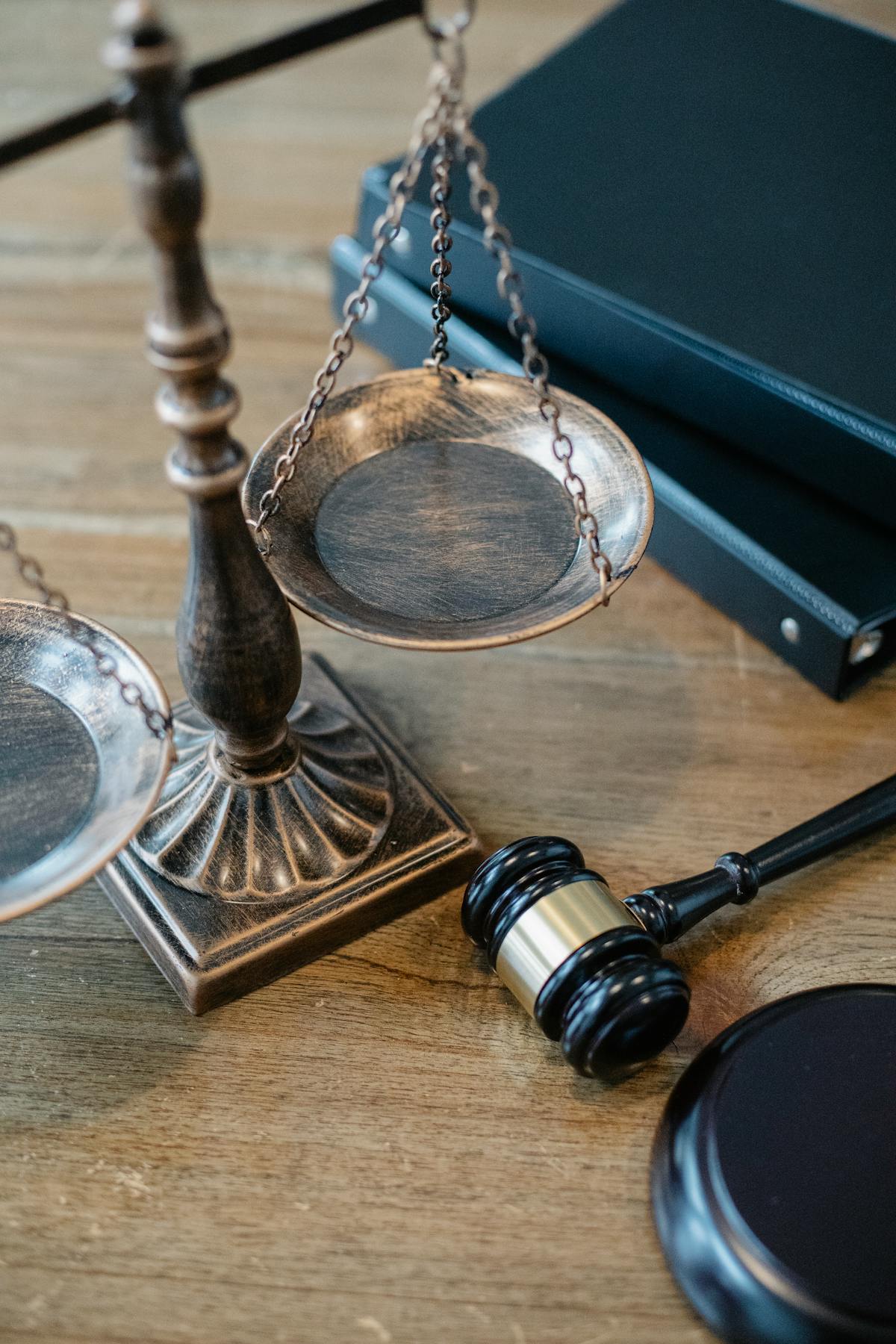AI and the Future of Criminal Law in the USA: How Technology Is Reshaping Justice in 2025
Artificial intelligence (AI) is revolutionizing industries across the globe — and in 2025, it’s redefining one of the oldest institutions in history: the criminal justice system. From AI-powered facial recognition tools to predictive analytics that forecast crime trends, technology is now influencing how laws are enforced, cases are built, and verdicts are delivered. The impact is profound, raising critical questions about fairness, bias, and accountability in modern American law.

The U.S. legal system has traditionally been human-centered — built on judgment, precedent, and the moral reasoning of judges and juries. But as courts and law enforcement agencies adopt AI technologies, the line between human decision-making and machine-driven processes is blurring. Predictive policing tools analyze massive datasets to identify “high-risk” areas or individuals. AI legal assistants help attorneys process evidence faster than ever. Even sentencing algorithms are being tested to assess the likelihood of reoffending. While these advancements promise efficiency and objectivity, they also pose unprecedented ethical dilemmas.
According to a 2025 report by the American Bar Association (ABA), more than 60% of U.S. state courts now use AI-driven tools in some capacity — whether for case management, data analytics, or forensic evidence analysis. Federal agencies such as the Department of Justice (DOJ) and FBI are also leveraging AI for national security investigations and cybercrime detection. Yet, this technological revolution has sparked fierce debates about civil liberties, algorithmic bias, and data transparency.

Critics warn that over-reliance on algorithms may erode fundamental rights, including the presumption of innocence and equal treatment under the law. If an AI model trained on biased historical data recommends harsher sentencing for certain groups, does that perpetuate discrimination rather than eliminate it? These are not hypothetical scenarios — several U.S. courts have already faced backlash for using controversial risk assessment algorithms that disproportionately targeted minority defendants.
The central question for 2025 is no longer whether AI belongs in criminal law — but how it can be used ethically and transparently. This article explores the major technological shifts, legal reforms, and philosophical challenges driving the AI-law revolution in America’s justice system.
Predictive Policing and Risk Assessment: Innovation or Injustice?
One of the most controversial applications of AI in criminal law is predictive policing. Using machine learning algorithms, law enforcement agencies analyze crime data to predict where offenses are likely to occur and who might commit them. The goal is proactive intervention — deploying officers to prevent crimes before they happen. In theory, it sounds like the future of public safety. In practice, it’s a minefield of ethical and constitutional issues.

Systems like PredPol and Palantir Gotham are already being used by U.S. police departments in cities like Los Angeles, Chicago, and New York. These platforms process crime statistics, arrest records, and social patterns to identify potential hotspots. However, multiple studies have revealed a recurring flaw — the models often reflect the same biases found in historical policing data. Areas with higher arrests in the past, often low-income or minority communities, are flagged as “high risk,” leading to over-policing and reinforcing systemic inequality.
Civil rights groups, including the ACLU and Electronic Frontier Foundation (EFF), have raised alarms about these systems’ lack of transparency. Many predictive policing tools are built by private companies that refuse to disclose their algorithms, citing trade secrets — a problem known as the “black box effect.” This secrecy makes it nearly impossible for defense attorneys to challenge algorithmic evidence in court.

In 2025, several states have responded by enacting new regulations to govern AI use in law enforcement. California’s Algorithmic Accountability Act now requires any AI system used in public safety to undergo independent audits for fairness and transparency. Similarly, New York’s Public Oversight of Algorithmic Systems Law mandates agencies to publish annual reports on their AI tools and their societal impacts.
Despite criticism, predictive policing is not without merit. When properly monitored and audited, these tools can help allocate resources efficiently and even reduce crime in high-risk zones without racial targeting. The key lies in balancing innovation with ethical oversight — ensuring that technology enhances justice rather than distorts it.

The question remains: who watches the algorithms that watch us? Without strong accountability frameworks, the risk of digital injustice will only grow. As the U.S. justice system embraces AI, it must also build a parallel infrastructure for algorithmic ethics and transparency — or risk replacing human bias with machine bias.
AI Evidence and Digital Forensics in Modern Trials
As technology evolves, the way evidence is gathered, analyzed, and presented in U.S. courts is changing dramatically. Artificial intelligence now plays a central role in digital forensics — the science of collecting and interpreting electronic data for legal proceedings. From decrypting smartphones to analyzing surveillance footage, AI systems can process terabytes of information faster and more accurately than human investigators ever could.

In 2025, most major U.S. law enforcement agencies employ AI-driven forensic platforms such as Cellebrite AI and Magnet AXIOM Cyber. These tools can identify hidden files, reconstruct deleted messages, and even detect manipulated digital media. What once took weeks of manual investigation can now be completed in hours, making trials faster and more data-driven.
However, the integration of AI evidence introduces new legal challenges. Courts must determine whether algorithms used in forensic analysis meet the Daubert standard — a legal rule that governs the admissibility of expert evidence. Defense attorneys are increasingly questioning whether machine-generated findings can be cross-examined like human testimony. After all, an AI model cannot swear an oath or explain its reasoning.

In one landmark case in 2024, a U.S. district court rejected AI-generated voice analysis as admissible evidence due to lack of transparency in the software’s algorithm. The judge ruled that without access to the source code or validation data, the defense had no fair opportunity to challenge the system’s accuracy. This case set a precedent that continues to influence digital forensics in 2025.
Meanwhile, AI-powered video and image analysis tools are becoming standard in criminal trials. Systems like Clearview AI and BriefCam use facial recognition to identify suspects, track movement, and verify alibis. While these tools can strengthen evidence, they also raise constitutional questions under the Fourth Amendment, which protects against unreasonable searches and seizures.

The legal community is still grappling with how to balance technological efficiency with due process. Should juries rely on AI interpretations of data they cannot understand? Should defendants have the right to challenge an algorithm’s decision-making logic? These questions are at the core of the evolving relationship between technology and justice in America.
Going forward, experts suggest the introduction of AI validation standards — similar to DNA testing protocols — to ensure reliability and fairness in digital evidence. As one legal scholar wrote, “The courtroom of the future won’t just need lawyers and judges — it will need data scientists, ethicists, and engineers.”
Sentencing Algorithms and the Ethics of AI Judgment
Perhaps the most controversial use of AI in U.S. criminal law today is in sentencing and parole decisions. Several state courts have experimented with risk assessment algorithms designed to evaluate the likelihood of a defendant reoffending. The goal is to promote consistent, data-driven sentencing and reduce overcrowding in prisons. But in 2025, the ethical debate surrounding these tools has reached new intensity.

Tools such as COMPAS (Correctional Offender Management Profiling for Alternative Sanctions) have been in use since the mid-2010s, but recent studies show significant flaws in their predictions. In one high-profile study by ProPublica, COMPAS was found to be twice as likely to incorrectly label Black defendants as high risk compared to white defendants. Although developers have improved their models, similar disparities persist across newer AI systems.
In 2025, new federal guidelines now require transparency in any algorithmic system that influences judicial outcomes. The Department of Justice (DOJ) mandates that courts disclose when AI is used in sentencing recommendations and provide defendants the right to challenge algorithmic findings as part of due process. This legal shift represents a growing recognition that fairness cannot exist without explainability.

Critics argue that AI systems simply mirror human bias through data. If historical court data reflects systemic inequality, the model trained on that data will inevitably reproduce the same outcomes. This “bias loop” could amplify discrimination rather than eliminate it, especially when judges rely too heavily on algorithmic recommendations.
However, proponents insist that with proper oversight, AI can actually help reduce subjectivity and emotional influence in sentencing. By standardizing risk assessment and identifying patterns of judicial bias, technology may one day enhance—not undermine—justice. The key lies in transparency, accountability, and the active involvement of legal professionals who understand both law and data.

As America enters this new phase of algorithmic justice, lawmakers are calling for stronger ethical frameworks. The proposed Algorithmic Fairness and Transparency Act would establish national standards for the auditing and reporting of AI tools used in courts, ensuring that technology serves humanity — not the other way around.
The justice system of 2025 stands at a crossroads. AI offers a chance to modernize, accelerate, and improve legal outcomes — but only if guided by human empathy and ethical design. True justice cannot be automated; it must be informed by values that machines can never replicate.
AI in Prosecution and Defense Strategies
Artificial intelligence has not only reshaped how crimes are investigated — it’s transforming how prosecutors and defense attorneys build their cases. In 2025, both sides of the courtroom are leveraging machine learning to analyze evidence, predict jury behavior, and optimize legal strategies. The result is a new era of data-driven litigation where technology can make or break a case.

For prosecutors, AI serves as a powerful analytical ally. Modern systems can sift through thousands of documents, social media posts, and phone records to identify patterns of communication or intent. Tools like RelativityOne and Everlaw AI use natural language processing to flag relevant keywords, cluster similar documents, and even detect contradictions in witness statements. What once required a team of attorneys can now be done by a single prosecutor equipped with AI-assisted research.
In 2025, federal prosecutors increasingly use AI to evaluate case strength before trial. Algorithms trained on years of criminal outcomes can assess the probability of conviction, helping offices allocate resources more efficiently. This predictive capability may reduce the number of weak or biased prosecutions — though some experts warn it could also encourage overreliance on mathematical risk scores.

On the defense side, AI has become equally indispensable. Defense lawyers now use machine learning to cross-reference case law, simulate jury reactions, and anticipate prosecutorial arguments. AI-driven tools such as Casetext CoCounsel and Harvey AI allow attorneys to craft arguments grounded in both legal precedent and predictive analytics. These systems help identify inconsistencies in police reports or highlight procedural errors that could lead to case dismissal.
Moreover, AI-powered sentiment analysis is being tested to analyze the emotional tone of judges and jurors during hearings. By monitoring subtle facial expressions and voice modulations, AI systems can provide insights into how arguments are being received — a controversial but increasingly common tool in high-stakes trials.

However, AI-assisted advocacy raises complex ethical questions. Should attorneys be required to disclose when AI systems helped shape their arguments? What happens if a model recommends a course of action that violates professional ethics or attorney-client privilege? The American Bar Association (ABA) is currently drafting guidelines for AI usage in legal practice to ensure technology enhances — not replaces — human judgment.
Ultimately, AI is not a replacement for skilled advocacy but an amplifier of human expertise. The best attorneys of 2025 are those who combine traditional legal intuition with technological fluency — lawyers who understand not just the law, but the data behind it.
Privacy, Surveillance, and Constitutional Rights
As AI becomes more deeply embedded in law enforcement and court systems, it collides with one of America’s most sacred values: privacy. The U.S. Constitution — specifically the Fourth Amendment — guarantees protection against unreasonable searches and seizures. Yet, in 2025, this protection is being tested by an era of AI-driven surveillance, facial recognition, and predictive analytics that can track individuals’ every digital move.

Across major U.S. cities, law enforcement agencies have deployed networks of smart cameras equipped with real-time facial recognition. These systems can identify suspects, track vehicles, and even detect suspicious behavior. While effective for public safety, they have sparked legal battles over privacy infringement and the potential for mass surveillance. Civil liberties organizations warn that these technologies, if left unchecked, could erode constitutional rights.
The debate reached a peak in early 2025 when the Supreme Court heard the case of United States v. Jefferson, which questioned whether using AI to analyze public footage without a warrant violated the Fourth Amendment. The Court ruled narrowly in favor of the government, citing “reasonable expectation of privacy” standards, but emphasized that future technologies may require new constitutional interpretations.

The rapid adoption of AI-powered surveillance tools has also revived the debate over data ownership. Should individuals have the right to control or delete data collected by government systems? Should there be limits on how long agencies can store biometric information? New legislative proposals — such as the Federal Biometric Privacy Act — seek to establish national standards for data retention and consent.
In parallel, the use of AI for voice recognition and natural language monitoring is raising First Amendment concerns. Tools designed to detect threats online can also be used to profile citizens based on political speech or affiliations. Legal experts warn that such overreach could blur the line between national security and unlawful surveillance.

To strike a balance, some states have enacted stricter privacy protections. Illinois and Washington, for example, now require explicit consent for facial recognition use in public spaces. California’s Privacy Rights Act (CPRA) extends similar rights to residents, giving them control over how their biometric data is processed and shared.
As America navigates this new frontier, the central question becomes: how much privacy are citizens willing to sacrifice for safety? The future of AI in law will depend on striking that balance — a balance that defines not only justice but democracy itself.
AI Bias and Discrimination in Criminal Justice
One of the most pressing challenges in adopting artificial intelligence for law enforcement and court systems is algorithmic bias. Despite its promise of neutrality, AI is only as unbiased as the data it learns from — and in the United States, much of that data reflects decades of inequality in policing, sentencing, and incarceration. The result: predictive models that may unintentionally perpetuate racial and socioeconomic disparities.

In 2025, concerns about AI discrimination have grown louder than ever. Studies from the MIT Media Lab and Stanford Law School revealed that facial recognition algorithms still misidentify people of color up to 20 times more often than white individuals. This leads to wrongful arrests, false positives in criminal databases, and systemic harm to already marginalized communities.
Predictive policing systems such as PredPol and Palantir Gotham have been criticized for amplifying biased arrest patterns. When these models rely on historical arrest data, they are more likely to send officers back into the same over-policed neighborhoods, reinforcing a feedback loop of inequality. This is not a technical glitch — it’s a human rights issue that demands both legal and ethical scrutiny.

To counteract this, legal scholars and data scientists are collaborating to develop algorithmic fairness frameworks. These frameworks test AI models for disparate impacts before they’re deployed in real-world settings. For instance, the Fairness through Awareness principle requires algorithms to evaluate outcomes across demographic groups, ensuring that recommendations — such as sentencing predictions — don’t unfairly penalize minorities.
Several U.S. courts are also experimenting with AI audit systems to monitor how risk-assessment tools influence bail or parole decisions. Judges in New York and California now receive “transparency reports” that outline an AI tool’s accuracy rate, training data sources, and known biases. This level of oversight is becoming essential as artificial intelligence gains more influence in the courtroom.

The legal implications of bias extend far beyond technical fairness — they strike at the heart of constitutional law. The Equal Protection Clause under the Fourteenth Amendment prohibits discriminatory treatment by government institutions, meaning that biased algorithms could become the next frontier for civil rights litigation.
In fact, in early 2025, the landmark case Williams v. Illinois Department of Justice became the first lawsuit to challenge an AI system’s bias as unconstitutional. The case set a precedent for demanding algorithmic transparency in public safety applications, forcing vendors to disclose how their models make life-changing decisions.
Addressing bias isn’t just a legal necessity — it’s a moral one.
As AI continues to evolve, the justice system must evolve with it, ensuring
With artificial intelligence now touching every aspect of the U.S. legal system — from police patrol routes to sentencing algorithms —
the demand for regulatory oversight has become impossible to ignore.
Lawmakers, advocacy groups, and international bodies are racing to design frameworks that can keep pace with this rapid innovation.
In 2025, Congress introduced the Artificial Intelligence Accountability Act (AIAA),
a landmark bill that seeks to establish standards for the ethical deployment of AI within criminal justice.
The act would require all AI vendors selling software to U.S. courts or law enforcement agencies to register their algorithms,
submit transparency documentation, and undergo independent audits every two years.
Similarly, the Federal Trade Commission (FTC) has taken a stronger stance on algorithmic accountability.
It now mandates that companies using predictive analytics in the justice sector disclose data sources, model performance, and potential error margins.
Violations could lead to penalties or bans on government procurement — a major shift in holding technology providers legally responsible.
The Department of Justice (DOJ) has also launched a new division, the Office of AI Integrity (OAI),
tasked with reviewing all AI-assisted cases where predictive tools influenced sentencing or parole outcomes.
The OAI collaborates with universities and civil rights organizations to detect bias and recommend corrective measures.
Beyond national initiatives, the United States is aligning its AI ethics strategy with international norms.
The EU AI Act — a global benchmark for AI regulation — has inspired parts of American legislative proposals,
especially around high-risk applications like criminal justice, biometric surveillance, and emotion recognition technologies.
However, regulation remains a balancing act.
Too little oversight invites abuse; too much can stifle innovation.
The future of AI in criminal law depends on striking that delicate balance —
where technology serves justice without compromising liberty, privacy, or due process.
As legal scholars often say: “AI may predict the future, but law must protect the present.”
Ensuring that protection is the task of every lawyer, legislator, and technologist shaping tomorrow’s justice system.
To truly understand how artificial intelligence is reshaping criminal law, we must examine a real-world example:
the rise of predictive sentencing algorithms in U.S. courts.
These AI systems analyze historical data — including prior convictions, demographics, and behavioral assessments —
to estimate a defendant’s likelihood of reoffending. In theory, this helps judges determine fairer sentences.
But in practice, the human element remains indispensable.
One of the most debated tools in this field is the COMPAS algorithm (Correctional Offender Management Profiling for Alternative Sanctions).
Originally developed to assist parole boards, COMPAS quickly gained traction in U.S. sentencing.
It uses machine learning to calculate a “risk score” — a number that supposedly reflects the defendant’s probability of future criminal behavior.
However, investigative reports by ProPublica exposed troubling racial disparities:
African-American defendants were twice as likely to be labeled “high risk” compared to white defendants who reoffended at higher rates.
The State v. Loomis (2016) case in Wisconsin was among the first to challenge this system.
The defendant argued that COMPAS violated his right to due process because its inner workings were proprietary and not open to scrutiny.
Although the Wisconsin Supreme Court allowed the use of COMPAS, it ruled that judges must be warned of its limitations —
setting the stage for future transparency debates that continue into 2025.
In 2025, AI-assisted sentencing remains a hotly contested issue.
Proponents argue that AI can remove emotional bias, offering consistent data-driven outcomes.
Critics counter that algorithms can encode systemic prejudice and overlook individual circumstances that only a human judge can weigh.
A risk score, after all, cannot account for remorse, rehabilitation, or the complexities of human behavior.
The legal system is adapting. New hybrid sentencing frameworks now combine AI recommendations with mandatory judicial oversight.
For example, judges in Arizona and Massachusetts use an “AI Advisory Report” that must be reviewed and signed off manually.
This ensures that algorithms inform — but do not dictate — final decisions.
The blend of machine precision and human judgment represents the emerging ethical balance of modern criminal justice.
The ultimate lesson from predictive sentencing is clear:
AI can process patterns, but only humans can deliver justice.
The challenge of 2025 and beyond lies in maintaining that human core amid rapid technological transformation.
Artificial intelligence is no longer a futuristic concept — it’s a daily reality in U.S. courts, law firms, and police departments.
From predictive policing to automated sentencing recommendations, AI’s impact on criminal law is deep, complex, and unavoidable.
Yet as 2025 unfolds, one truth becomes evident: technology alone cannot define justice.
The American legal system faces a dual mission — embracing innovation while safeguarding fairness.
Lawmakers, data scientists, and judges must collaborate to ensure transparency, accountability, and human dignity remain at the forefront of every AI-driven decision.
This collaboration has already sparked new institutions like the National AI Justice Board (NAJB),
which oversees ethical compliance across federal and state applications of artificial intelligence.
Looking forward, the concept of “Algorithmic Due Process” will define the next decade of U.S. criminal law.
Courts will not only evaluate the actions of human defendants but also the behavior of algorithms themselves.
Was the AI model trained ethically? Was it audited for bias? Were citizens properly informed when AI influenced their cases?
These questions are shaping a new legal frontier where justice must adapt to both humans and machines.
In the end, AI in criminal law represents not a replacement for human judgment but an evolution of it.
The goal is not to hand over justice to machines but to use technology as a mirror — one that reflects our values, biases, and responsibilities.
Whether society succeeds or fails in this experiment depends not on algorithms, but on the ethics of those who build and regulate them.
The road ahead will be challenging.
But with accountability, compassion, and informed oversight, artificial intelligence can become a force for good —
not only making the U.S. justice system more efficient but also more just.
As we look toward 2030, one message echoes from every courtroom to every coding lab:
Justice must remain human, even in the age of machines.
Regulatory Oversight and Future Legislation



Case Study: Predictive Sentencing and the Human Element



Conclusion: The Road Ahead for AI and Criminal Law


